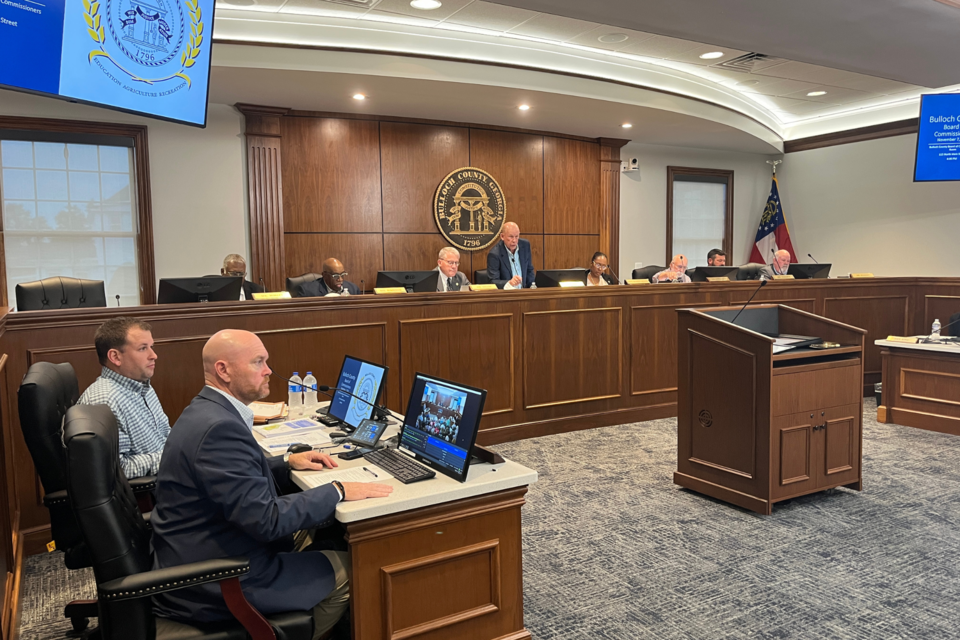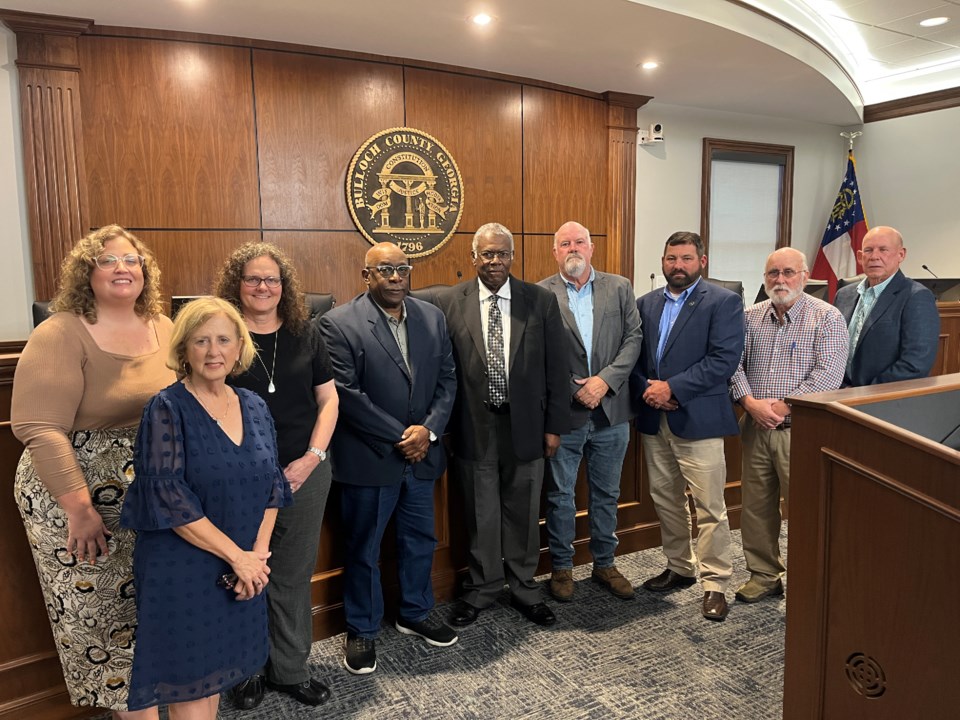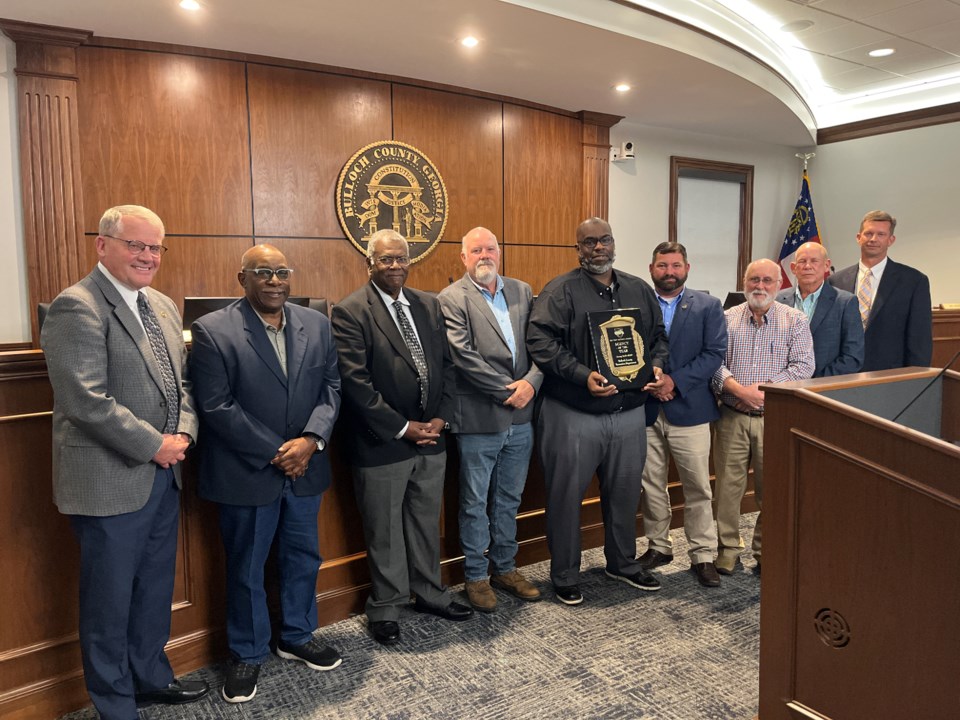At the third and final Bulloch County Commission meeting on Thursday, November 7th, Commissioners honored county departments for recent awards, provided a critical update on the county’s flood recovery, and dove into a zoning agenda filled with community debates over proposed developments.
County Manager Tom Couch began the meeting by welcoming Patricia Hunter, Vice-Chair of the Hospital Authority of Bulloch County, who updated the commission on the authority’s role in supporting the community. Hunter highlighted the authority’s commitment to county tax relief and health grants, noting that 80% of the authority’s investment earnings, $1.7 million this year, are dedicated to easing tax burdens. Another 10% is allocated to health programs, including local agencies like the Hearts and Hands Clinic and Ogeechee Area Hospice. Since 1996, the authority has contributed nearly $42 million for tax relief and health grants, making a quiet but powerful impact on the county’s well-being.
The Finance Department was next to be recognized for receiving the Distinguished Budget Presentation Award for the seventh year in a row, a notable achievement that places Bulloch among a select group of Georgia counties recognized for financial transparency and strategic planning. County Manager Couch praised Finance Director Kristie King for her team’s dedication, which earned them an additional award for excellence in meeting strategic goals and strategies criteria.
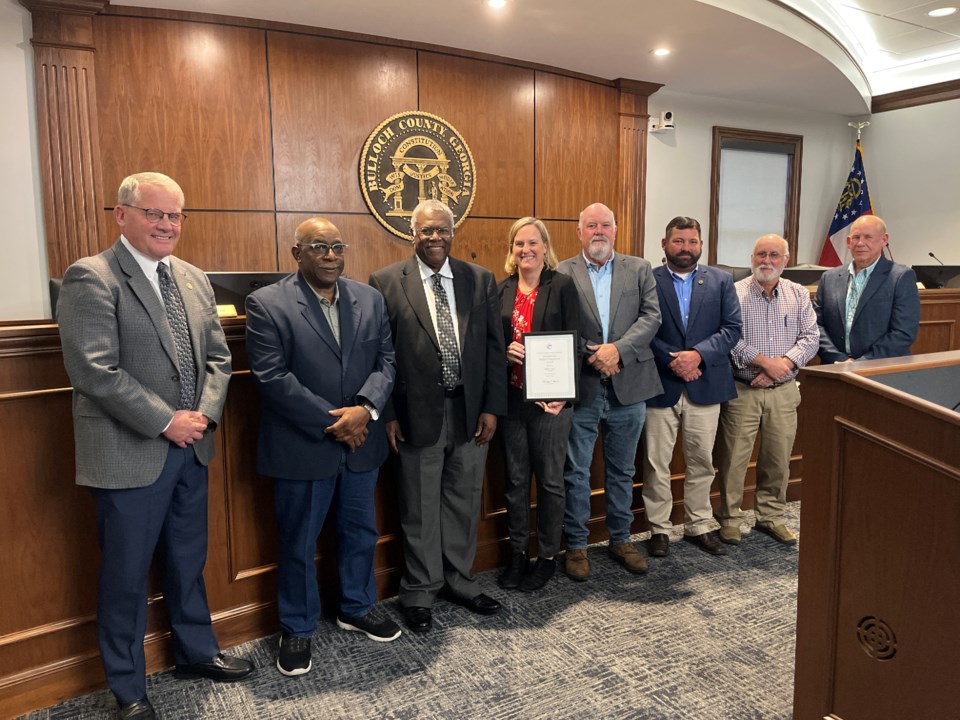
Venus Mincey-White, Clerk of the Board, was also celebrated for achieving her Georgia Certified Clerk certification from UGA’s Carl Vinson Institute of Government, reflecting her commitment to county governance and meeting management. Couch described her certification as an asset to the county’s leadership.
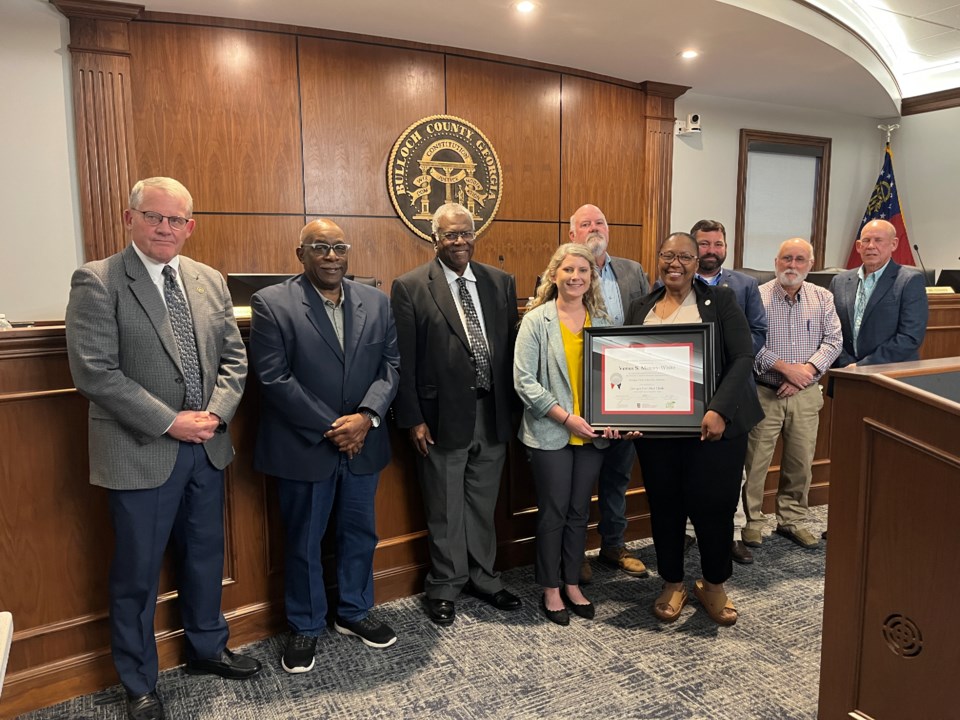
The Bulloch County Recreation Department received the Agency of the Year Award from the Georgia Recreation and Parks Association (GRPA) in recognition of its community service and innovative programming. Led by Director Dee Crosby, the department celebrated its 75th year with notable achievements, including field upgrades at Mill Creek, hosting GRPA tournaments, and continued success with Splash in the Boro. Reflecting on the department’s history, Couch recalled Max Lockwood, who laid the foundation by teaching countless local kids how to swim.
Transitioning from recognition to urgent updates, Public Works Director Dink Butler and Fire Chief Ben Tapley provided commissioners with a sobering overview of recent storm impacts. Heavy rains caused severe flooding across the county, resulting in approximately 40 road closures and multiple rescues, including several where emergency teams navigated submerged roads. Tapley described instances where first responders used high-water vehicles and boats to reach people in need.
Butler highlighted the challenges the county faces in debris removal, noting that sub-contracted trucks were diverted to Florida following a post-storm demand surge. The county has only managed to collect about 15% of storm debris, and unless an extension is granted, FEMA’s 90-day reimbursement deadline could reduce the county’s reimbursement rate from 100% to 75%, costing the county an estimated $500,000. Commissioners discussed advocating for a 180-day extension, similar to allowances granted to neighboring states.
Attorney Chris Gohagan represented 5B Holdings, LLC in their request to rezone a 4-acre property on Pats Lane from R-25 (single-family) to R-2 (two-family residential) to build seven duplexes. Gohagan argued that the additional duplexes would enhance the area and align with existing development, addressing concerns over road conditions, water reliability, and infrastructure.
George Jenkins raised opposition, citing issues with litter, increased traffic, and a changing neighborhood character due to a rise in rentals. He noted that renters do not always take the same care as homeowners, creating litter and upkeep problems. Deon Hendrix voiced frustration with the lack of county support for existing homeowners and the potential negative impact of the development. Commissioners ultimately denied the rezoning.
Attorney Steve Rushing presented Jason Williams’ plan for a 20.83-acre multi-family development on Highway 67. The development, which aligns with the county’s future land use plan, would cater to the increasing demand for housing around Statesboro. While initial designs had proposed access through Carrington South Drive, Rushing stated that primary access would now be off Highway 67, pending GDOT approval. Commissioners approved the rezoning.
Andy Bunch, HOA President of Carrington South, opposed the development, raising concerns over traffic and safety on Carrington Drive. Emory Grady Lane III highlighted potential disruptions to the single-family character of the neighborhood. Despite opposition, the commissioners approved the rezoning.
Following the approval of the multi-family development, Rushing presented on behalf of Jason Williams for an adjacent 7-acre parcel, similarly requesting R-3 zoning. Rushing reiterated the intention to create a cohesive project that respects neighborhood boundaries with buffer zones and landscaping. Andy Bunch again voiced his opposition, arguing that multi-family developments create property management issues and reduce neighborhood quality. However, commissioners approved the request.
Cody Rogers of EMC Engineering outlined a plan for a 47-townhome development on 10.55 acres on Brannen Drive, with a density of 4.45 units per acre. Residents, including Stacy Webb and Shelly Rountree, opposed the project, citing environmental concerns, property value impact, and inadequate infrastructure, especially around Brannen Drive. Webb presented a petition with 85 signatures against the development. Despite Rogers’ assurances of effective stormwater management, the commissioners denied the rezoning request.
John Dotson represented Eagle Creek Construction, proposing a 31-lot single-family subdivision on 48 acres near Arcola Road. Dotson highlighted the project’s alignment with R-40 zoning and shared plans for private water and stormwater management systems. However, Jennifer Carstans cited the strain on infrastructure, and Dianne Smith emphasized traffic safety concerns. Commissioners sided with the Planning and Zoning Board’s recommendation and denied the rezoning.
Cody Rogers presented a proposal for a 69-home subdivision on a 57.7-acre property, just over one unit per acre. Susan Stainback voiced strong opposition, citing concerns over environmental impact, flooding, and disruption to agricultural land. Rogers highlighted stormwater management measures and low-density plans, but commissioners denied the rezoning.
Robbie Bell proposed a subdivision on Macedonia Road, featuring R-40 zoning with 69 single-family homes. Bell addressed concerns by modifying plans to direct access to Old River Road and promising restrictive covenants. Local residents, including Angie Dyches and Karen McClain, opposed the development, arguing it would alter the rural character, increase traffic, and strain local services. Commissioners denied the rezoning.
Attorney Steve Rushing requested a deferral for Blue Water Bulloch’s application, citing unresolved issues with city water and sewer connections. Joel Martin raised concerns about annexation and potential city expansion encroaching on his property. Commissioners deferred the request to the December 3rd meeting.
Then, we get into public comments. David Reed expressed frustration over increased stormwater runoff and flooding exacerbated by new development and inadequate drainage systems. He urged city and county collaboration to improve retention pond requirements for new developments.
Lisha Nevil echoed concerns about overdevelopment, warning against reliance on Hyundai’s EV plant due to potential changes in the industry. She urged commissioners to consider current growth projections before approving additional housing, especially given current strains on infrastructure and schools.
Last but not least, we get into staff comments.
Public Works Director Dink Butler and Fire Chief Ben Tapley provided an extensive update on flood response, detailing road closures and emergency rescues conducted by the fire department and sheriff’s office. Butler reiterated the challenge of meeting FEMA’s 90-day reimbursement deadline for debris cleanup, noting that only 15% of debris has been collected due to truck shortages.
Commissioners discussed potential advocacy for a 180-day extension and acknowledged Butler’s assurance that his team would continue road evaluations and repairs post-storm. Following the discussion, the meeting adjourned after an executive session to discuss personnel and litigation matters.
In summary, the Bulloch County Commission meeting illustrated the tension between community growth and preservation, as commissioners weighed housing demands against resident concerns over infrastructure, safety, and environmental impacts. Through recognitions, storm response updates, and a lengthy zoning debate, the commissioners balanced community needs while considering Bulloch’s long-term growth trajectory.
Continue reading for the extended verision of the November 7th meeting coverage.
I. CALL TO ORDER, WELCOME MEDIA AND VISITORS
II. INVOCATION AND PLEDGE
III. ROLL CALL
IV. PRESENTATIONS
1. Hospital Authority of Bulloch County - Patricia Hunter, Vice-Chairman Hospital Authority of Bulloch County
Bulloch County Finance Department have been awarded the Distinguished Budget Presentation Award for the FY2024-2025 budget book. This is their seventh consecutive year receiving this award. This year they also received special recognition for Strategic Goals and Strategies criteria.
Patricia Hunter, Vice-Chair of the Hospital Authority of Bulloch County, addressed the commissioners with an overview of the authority’s tax relief contributions and community support initiatives. Hunter highlighted the authority’s longstanding partnership with the county, tracing back to 1996. She noted that since the hospital's sale in 2005, the authority has provided 80% of its investment earnings for county tax relief, amounting to a recent contribution of $1,701,000—significantly more than anticipated due to favorable interest rates. An additional 10% of earnings supports local agencies offering non-hospital healthcare services, with beneficiaries including the Georgia Southern Senior Companion Program, Hearts and Hands Clinic, and Ogeechee Area Hospice. The remaining 10% goes toward sustaining and growing the authority’s fund corpus. Since 1996, the authority has contributed a cumulative $37,399,000 for tax relief and nearly $4.7 million in health grants across the county. Hunter expressed pride in the authority’s quiet yet impactful contributions to the community’s health and financial well-being, underscoring the importance of this ongoing support.
2. GFOA Distinguished Budget Presentation Award with Strategic Goals and Strategies Special Recognition
Bulloch County Finance Department have been awarded the Distinguished Budget Presentation Award for the FY2024-2025 budget book. This is their seventh consecutive year receiving this award. This year they also received special recognition for Strategic Goals and Strategies criteria.
The county celebrated another year of recognition from the Government Finance Officers Association (GFOA), receiving the Distinguished Budget Presentation Award. This achievement highlights Bulloch County’s financial transparency and strategic planning, marking nearly a decade of consistent excellence in budget and financial reporting. Bulloch is one of only a few counties in Georgia to receive this prestigious award along with an additional accolade for excellence in financial reporting.
County Manager Tom Couch gave special recognition to Kristie King, whose leadership in the finance department was instrumental in earning the award. He praised her commitment to transparency and thoroughness, making Bulloch’s financial reporting a model of full disclosure and strategic clarity. While presenting the certificate, Couch acknowledged the collaborative effort of the finance team, underscoring the collective dedication to exemplary financial management.
3. Venus Mincey-White, Clerk of the Board - University of Georgia Carl Vinson Institute of Government Clerks Certification
Venus Mincey-White completed 101 hours of course work and met all requirements required to obtain her Georgia Certified Clerk certification through the University of Georgia Carl Vinson Institute of Government. The Georgia Clerks Education Institute Certificate Program provides instruction to establish standards and professional goals for county and city clerks. Mrs. Mincey-White completed requirements this past May and was recognized at the Georgia Clerks Education Institute Fall Conference on September 9, 2024 in Athens, Georgia.
A moment of well-deserved recognition was given to Venus Mincey-White, Clerk of the Board, who recently earned her certification from the Georgia Clerk’s Education Institute, part of UGA’s Carl Vinson Institute of Government. County Manager Couch highlighted the intensive process Venus undertook—over 100 hours of coursework, training, and even homework—all aimed at building her expertise in meeting management, records oversight, and supporting county commissioners.
Couch emphasized how the role of a clerk varies widely depending on jurisdiction, sometimes involving additional training in finance, HR, and other local government responsibilities, especially in smaller counties. He noted Venus’s background, including a degree in finance and experience in the probate court, which he joked was “their loss, our gain.” He shared the pride of the county leadership in her accomplishments, applauding her as a key member of Bulloch’s “bench strength” in county management.
4. Bulloch County Recreation Department - "Agency of the Year Award" - 2024 First District Awards
On October 23, 2024 the Bulloch County Recreation Department was awarded the Agency of the Year Award at the Georgia Recreation and Parks Association District 1 Banquet. The Georgia Recreation and Park Association recognize excellence in Recreation, Parks, and Cultural Affairs in Georgia.
County Manager Couch gave a hearty nod to the Parks and Recreation Department, celebrating its 75-year legacy of community service and development. Reflecting on the department’s history, Couch recalled Max Lockwood, who laid the foundation by teaching countless local kids how to swim. Since then, a lineup of accomplished directors has continued to elevate the department, several of whom have been inducted into the Georgia Recreation and Park Association (GRPA) Hall of Fame.
The big recognition of the evening was for the department’s recent achievements at the GRPA First District Annual Awards in October. Bulloch’s Recreation Department, led by new Director Dee Crosby and Assistant Director Tony Morgan, received a 20-year service award for their dedication to both Bulloch County and the GRPA. Crosby, along with Cannon Petitjean, was honored with this milestone. However, the highlight was Bulloch’s receipt of the coveted district Agency of the Year Award in the 50,000-80,000 population category. This recognition came on the back of a strong 75th anniversary, marked by field lighting upgrades at Mill Creek and Brooklet, the expanding success of the Ag Arena and Splash in the Boro, and the department’s role in hosting GRPA baseball and softball tournaments.
Beyond these accolades, Couch underscored the department’s meaningful impact through after-school programs and summer camps. He praised Joy Deal’s leadership, which aims to enrich local children’s lives beyond mere daycare by fostering play, socialization, and learning experiences in coordination with the school system. Couch extended his congratulations to all involved, noting the importance of the department’s service to the community.
V. APPROVAL OF GENERAL AGENDA
County Manager Couch makes a motion to add an executive session as item 11 to talk about personnel and litigation, and it is approved.
APPROVED - VI. CONSENT AGENDA
1. Minutes Approval: Thursday October 10th, 2024 04:00 PM
2. Minutes Approval: Tuesday October 15th, 2024 08:30 AM
3. Approve the Reappointment of Mildred Wilson and Linda Christy to the Statesboro-Bulloch Land Bank Authority
This Board consists of 4 members, 2 appointed by Bulloch County and 2 appointed by the City of Statesboro. The terms are for 4 years. County representatives Mildred Wilson and Linda Christy have both agreed to serve a second term beginning January 1, 2025 through December 31, 2028.
4. Approve the Reappointments of Commissioner Anthony Simmons and Commissioner Timmy Rushing and the Appointment of Commissioner Toby Conner to the Bulloch County Public Facilities Authority
Commissioner Toby Conner was nominated by the Board to serve on the Bulloch County Public Facilities Authority for a term of two years beginning January 1, 2025 through December 31, 2026. Commissioner Anthony Simmons and Commissioner Timmy Rushing have agreed to serve another two year term beginning January 1, 2025 through December 31, 2026.
5. Grant a 2025 alcoholic beverage renewal license for package retail beer and wine sales to certain establishments with a current 2024 license
6. Approve a service repair request for concrete work for the Brick Paver Replacement Project at Mill Creek Park
Mill Creek Brick Paver Replacement is a budgeted item in the FY25 CIP schedule (Project RD24 / $250,000). This portion of the Mill Creek Paver project is for concrete work at three and four field complexes. Two quotes were received - lowest quote was $87,420 from Quality Concrete Finishing, Inc. Tony Morgan, Parks & Rec Assistant Manager, recommends approval.
7. Approve the purchase of Bullard Thermal Imaging Cameras
The Bulloch County Fire Department seeks to purchase 4 new Bullard Thermal Imaging Cameras, This purchase will help our Department equip our ladder truck with life saving equipment to better serve our citizens. Bullard cameras have become the camera or choice for Bulloch County; Thermal Imager's allow Firefighters to see through smoke to locate fire, exits, and victims.
8. Approve a Long Leaf Pine Straw bid from Brian T. Powell Enterprises, Inc.
Sealed bids were accepted for the purchase of Long Leaf Pine Straw. The pine straw will be used for Parks Division projects (4,500 bales) and for the I-16 landscaping project (2,000 bales). The cost would once again be split between Recreation and Transportation budgets. Two bids were received: Georgia Pine Straw, Inc. for $3.58/bale and Brian T. Powell Enterprises, Inc. for $3.60/bale. Brian T. Powell Enterprises, Inc. is a local vendor and meets the criteria in the Bulloch County Purchasing Policy and has agreed to match the $3.58/bale price for a total of $23,270. It is the recommendation of Tony Morgan, Recreation & Parks Assistant Director, to approve the bid from Brian T. Powell Enterprises, Inc. to supply pine straw for the period November 1, 2024 to October 31, 2025.
9. Approve and ratify Sand Creek Construction hauling service
Public Works leased trucks from Sand Creek Construction to aid in road repairs due to Debby, from Aug. 26th to Aug. 30th, at a cost of $17,066.25.
10. Approve a Software Agreement with Motorola
This is a 2 year software contract. We are in the second year. This contract is to keep Bulloch County Radio System on the same software platform as the Savannah master site and all other users of the SEGARRN radio system. Cost $123,281.40
11. Approve a contract with Reeves Construction Company for an Apron Rehabilitation Project at the Statesboro-Bulloch County Airport
12. Approve a Service Agreement with FEMAC for a security system at 28 Hill Street, Statesboro, GA
Adult Probation and Parole would like to enter into a service agreement with FEMAC for a security system for the office at 28 Hill Street, Statesboro, GA. We are requesting that FEMAC take over the Fire and Burglar alarm system, along with upgrading the security cameras throughout the building. The total cost for the upgrade of the camera system, monitoring, and cloud storage would cost $9,910.40 (which includes 12 month of storage for camera and monitoring the alarm system).
VII. NEW BUSINESS
APPROVED 1. State Homeland Security Program Award: Bulloch County 2024 Georgia Search and Rescue (GSAR) Project Grant
The Homeland Security Grant Program supports the core capabilities across the five mission areas of Prevention, Protection, Mitigation, Response, and Recovery based on allowable costs. The HSGP supports the Quadrennial Homeland Security Review Mission to Strengthen National Preparedness and Resilience. HSGP funds a range of activities, including planning, organization, equipment purchase, training, exercises, and management and administration across all core capabilities and mission areas. Purpose: The proposed Technical Rescue Team project aims to establish a specialized team equipped to respond to technical rescue situations, such as high-angle rope rescue, confined space rescue, and structural collapse rescue. The purpose of this team is to enhance the state's emergency response capabilities and ensure the safety of individuals in high-risk rescue scenarios in and around Bulloch County. This grant would allow us to serve the growing population, alongside the Tier 1 plants that are in construction in support of the Hyundai Mega Plant in neighboring Bryan County. Our prevention division has identified through the plan review process a serious potential for specialized rescue due to the construction of these facilities. Currently in construction, multiple large facilities including: a plastics recycling facility, approximately 100 feet tall, with floor penetrations and mezzanines throughout the facility, a separate tier 1 project in which has service area pits approximately 30 feet deep for manufacturing auto parts, as well as many others. The amount of the award is $25,000
Corey Kemp, Director of Emergency Management, presented a Homeland Security grant opportunity aimed at enhancing Bulloch County’s emergency response capabilities. Kemp explained that shortly after joining in May, he and Chief Mitch Sikes identified the need for specialized equipment for technical rescue operations—specifically high-angle, confined-space, and structural collapse rescues. This equipment, which is not part of the standard emergency toolkit, aligns with Homeland Security’s core missions: prevention, protection, mitigation, response, and recovery.
Kemp highlighted that this gear is essential to meet the demands of Bulloch County’s growing population and the new industrial developments along I-16. Chief Sikes, who selected the specific equipment following a recent plan review, joined the presentation to offer additional insights on its anticipated use in future rescue operations. Kemp requested approval to accept the $25,000 grant, emphasizing that it requires no county match.
APPROVED 2. Motion to allow the Fire Chief to move forward with a pre-approved purchase of up to $525,000.00 for new tanker/pumper.
The fire department has negotiated a couple of purchases for a tanker over the last couple of months. These have been priced through a Sourcewell contract, but before we could get it in front of the commissioners, they have been sold. These are units from 10-8 Fire Apparatus that are coming off the assembly line and would have a short turn around time.
Fire Chief Ben Tapley presented a request to expedite the purchase of a new tanker truck for Bulloch County’s fire department. He explained that, although funding for the tanker is already allocated, previous purchase attempts had fallen through due to the rapid turnover in the market and supply chain delays, issues compounded by recent hurricanes.
To streamline the process, Chief Tapley asked the commissioners for pre-approval to sign a contract for a tanker/pumper once he finds one available for under $525,000. He mentioned that cooperative purchase pricing is already arranged through Sourcewell, meaning the county’s financial obligations are set. By securing this special authorization, he aims to "stamp" Bulloch County’s name on a ready-to-go tanker as soon as one is available, potentially before the end of the year or by early next year.
After brief discussion, the commissioners unanimously approved the request, allowing Chief Tapley to proceed with the purchase without additional delays.
APPROVED 3. Motion to approve a contract with EMC Engineering Services, Inc., in the amount of $32,500 to perform surveying and engineering design services for the Register Fire/EMS Parking Lot and Site, to be funded by TSPLOST.
The existing Register Fire Station is being renovated to add space for EMS personnel as well as additional Fire Department personnel and equipment. A parking lot will need to be constructed to accommodate the vehicles and equipment used by Fire and EMS, and also to provide a parking area for staff. There is also some existing concrete in the driveway in front of the building that is in disrepair. The proposed contract includes a boundary and topograhic survey, utility line survey, construction plans for the paving of the site, drainage analysis, and a geotechnical report. EMC Engineering is a local firm who has experience on similar design and surveying projects, and are qualified to perform this type of work. The County Engineer recommends approval of this proposal.
Fire Chief Tapley briefed the commissioners on the need for a new parking lot at the recently expanded Register Fire/EMS station. Tapley shared that the department officially started 24-hour ambulance service in the Register area on November 1, a significant milestone that increases the demand for suitable parking at the station. Currently, vehicles are being parked on the grass, which is unsustainable given recent rains and the station’s new septic system.
To address this, Tapley requested approval for County Engineer Brad Deal to proceed with a contract to build a permanent parking lot for the station. He explained that as renovations progress, the expanded facility will eventually house around 12 staff members, including firefighters, EMTs, paramedics, and a battalion chief, making proper parking facilities essential.
County Engineer Deal addressed the commissioners’ questions about the proposed parking lot for the Register Fire/EMS station. He explained that the station is surrounded by residential properties on all sides, so the design will ensure drainage doesn’t negatively impact the neighboring areas. The contract with EMC Engineering, presented for approval, includes surveying, establishing property boundaries, and conducting soil tests to avoid unexpected complications and costly change orders during construction. Deal pointed to a similar project in Portal, where poor soil conditions had been a challenge; this proactive geotechnical work will help mitigate similar issues here.
Deal clarified that while the approval covers engineering and design work, the actual construction will require separate bids and funding at a later date. He estimated the future construction costs may exceed $110,000, as the drainage requirements and overall size will likely make it a more complex project than the Portal lot. The project will be funded through TSPLOST, with all relevant departments in agreement to proceed.
APPROVED 4. Motion to approve a contract with Tim Lanier Construction, LLC, for drainage structure repairs on various county roads in the amount of $39,999, to be funded by TSPLOST.
The contract includes repairs to several locations on county roads. The repairs include installation of a new drain inlet box on Stillwater Drive, and repairs to existing drain inlet boxes on Wedgefield Way, Boothill Court, Cambridge Road, and Windmill Plantation Drive. Some of the damages were related to Tropical Storm Debby, while some of the damages were related to aging infrastructure exposed to heavy loads, or had defects from the original construction. Quotes were requested from three contractors for this work. The project would be funded using TSPLOST funds. The County Engineer has reviewed the quote submittals and recommends approval.
County Engineer Deal presented an agenda item for repairing drainage structures at five different locations on county roads. Deal noted that some of the damage resulted from Tropical Storm Debby, while other damage was caused by vehicular traffic impacting drainage structures. Since these repairs were unexpected and not included in the original budget, the county bundled the projects together to secure a better overall quote.
The total cost of the repairs is $39,900, funded by TSPLOST. The commissioners unanimously approved the contract with Tim Lanier Construction, LLC, to move forward with these necessary repairs.
APPROVED VIII. APPROVAL OF ZONING AGENDA
DENIED 1. 5B Holdings, LLC has submitted an application to rezone approximately 4 acres from R-25 (Residential 25,000 sq. ft.) to R-2 (Two-Family Residential 15,000 sq. ft.) for the purpose of building seven two-family dwellings. The property is located at 701 Pats Lane.
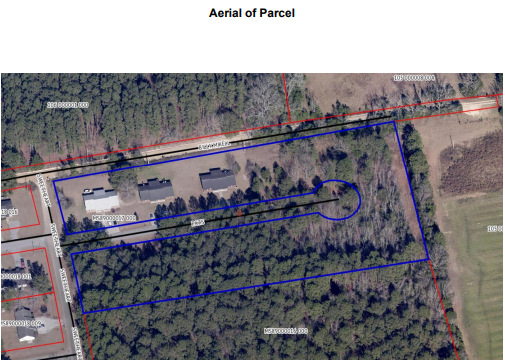
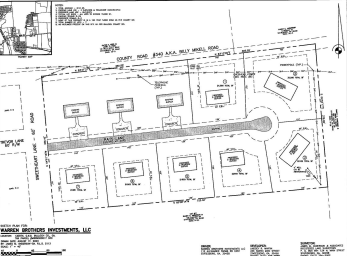
Attorney Chris Gohagan represented 5B Holdings, LLC in its request to rezone a 4-acre property on Pats Lane from R-25 (single-family) to R-2 (two-family residential). Gohagan noted that the rezoning would allow for the construction of seven additional duplexes on the site, complementing the three existing duplexes constructed in the early 1990s. This project has been part of a long-term plan for the area and aligns with the suburban corridor's future land use designation, supporting mixed uses.
Gohagan addressed three main community concerns raised during prior Planning and Zoning meetings: the condition of local roads, water system reliability, and a general lack of infrastructure. He explained that while these issues fall outside his client’s control, his client has taken steps to address them. The county already has a resurfacing contract underway to improve roads in the area, delayed only by recent weather events. Additionally, Gohagan noted that the water system, managed by Tucker Utilities, has sufficient capacity and is fully permitted, though it lacks a backup generator. To enhance reliability, 5B Holdings has committed to purchasing a generator for the water system, ensuring that future residents benefit from consistent access.
George Jenkins spoke against the proposed rezoning, citing concerns about litter, increased traffic, and the impact on neighborhood character. Jenkins emphasized that Sweetheart Lane, leading from Mill Creek Park off Highway 24, includes 14 privately-owned homes. However, additional rentals, particularly duplexes, have already led to visible issues with trash and property upkeep.
He pointed out that while the community already accommodates 36 rental units, the proposed seven additional duplexes would add 14 more rental units, effectively increasing the area’s rental housing by 39%. Jenkins expressed concern that renters, often staying only temporarily, do not take the same care as homeowners, contributing to an ongoing litter problem. Despite recent improvements to local roads, Jenkins noted that the increase in rental units would likely result in more traffic and further litter issues, particularly around the culdesac at the end of Pats Lane, which he described as an informal dumping ground.
Deon Hendrix voiced his frustration with the proposed rezoning, questioning both the developer’s intentions and the county’s commitment to its residents. Hendrix explained that the area had previously been inaccessible due to the poor condition of the original dirt road, which limited development for years. He pointed out that local homeowners had even surrendered parts of their land with the understanding that the county would maintain the road at a “decent” level but not with the intention of facilitating large-scale development.
Hendrix emphasized that residents have long felt overlooked by the county, with many taking on maintenance duties themselves over the years. He expressed disappointment that road improvements seemed to be prioritized only now to support the development project, suggesting that the county may have already decided in favor of the rezoning before community feedback was fully considered. Hendrix appealed to the commissioners to honor the agreement made with local homeowners and avoid approving a project that he believes disregards their contributions and concerns.
Lance Hodges expressed concerns about the impact of the proposed multifamily units on the community. Hodges, who has lived in the area with his wife for 34 years, emphasized that the addition of duplexes would only worsen existing traffic issues on Sweetheart Lane. He also shared concerns about how the development might decrease the value of nearby homes.
Hodges suggested that improvements to Billy Michael Road, which is partly unpaved, could help alleviate traffic issues by providing an alternate route to Sweetheart Lane. Instead of approving multifamily units, he proposed that single-family homes be considered, paired with road improvements to manage traffic more effectively. Hodges urged the commissioners to explore a compromise that could address both the developer's interests and the community’s concerns.
Gohagan addressed the concerns raised by residents regarding the proposed rezoning on Pats Lane. Gohagan acknowledged the residents' ongoing efforts to voice their worries about road conditions, traffic, and litter, emphasizing that these issues are shared challenges for the entire community. However, he argued that these concerns are not exclusive to the proposed development and reminded the commissioners of the delicate balance they must strike between community welfare and property rights.
Gohagan clarified that, contrary to some residents' impressions, no infrastructure or site work has commenced for the duplexes. He noted that while single-family homes could be developed on the site without any rezoning, the duplexes represent what he described as the "highest and best use" for the property, aligning with both the character and long-term plans for the area. He emphasized that these are not apartment units but duplexes, which he views as more consistent with the community’s design. Gohagan concluded by reaffirming the project's intent to contribute positively to the area, while respecting both the concerns of residents and the land use plan in place for over 30 years.
Commissioners denied the rezoning.
APPROVED 2. Jason Willams has submitted an application to rezone approximately 20.83 acres from R-40 (Residential 40,000 sq. ft.) to R-3 (Residential 15,000 sq. ft.) for the purpose of creating a multi-family housing development. The property is located at or near 16287 GA Hwy. 67.
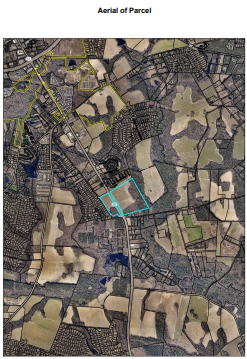
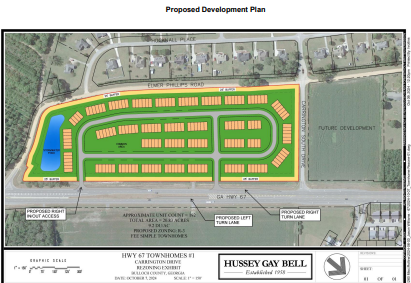
Before moving to the next zoning agenda item, Attorney Steve Rushing addressed a concern raised during the previous meeting regarding campaign contributions. Rushing clarified that, while neither he nor Jason Williams, the applicant, had made personal contributions relevant to the application, they initially left the campaign contributions section of the application blank based on his interpretation of the statute.
Upon further review, however, Rushing acknowledged that contributions from companies they have ownership interests in, his law firm and Williams’ real estate company, should have been disclosed. He assured the commissioners that these contributions were intended to support the political process in general, not to influence any specific agenda item. Rushing has since filed a supplemental report including these contributions to ensure transparency, and he emphasized that all contributions were appropriately reported by the candidates who received them.
Rushing also noted that political contributions do not require any commissioner to recuse themselves from voting. He took full responsibility for the initial oversight and reiterated that the updated disclosures now meet all statutory requirements.
Attorney Rushing, representing Williams, presented the proposal for a multi-family townhome development on a 20.83-acre parcel along State Highway 67, just past the fairgrounds. Williams, who attended with his family, intends to retain and maintain ownership of the townhomes, although eventual sale may be considered. Rushing explained that initial designs included access to Carrington South Drive, but after discussions with county staff, the project was redesigned to direct primary access to Highway 67, a state road. This access will require approval from the Georgia Department of Transportation (GDOT), which has been contacted but has yet to confirm any decision. If GDOT denies access, up to two entrances onto Carrington South Drive may be used, though Rushing assured that this should not significantly impact traffic flow for Carrington South residents.
Rushing highlighted the project’s compliance with zoning and buffer requirements, including engineered landscaping buffers along the boundary with Carrington South, designed to minimize visual and environmental impact. He noted that the county’s staff report concluded the development aligns with the county’s future land use plan, which designates the area as a suburban neighborhood character area, suitable for R-3 zoning. The property’s access to city water and sewer services also supports the viability of this multi-family project.
Rushing requested approval for the rezoning, affirming that the development meets the county’s conditions for compatibility, access, and buffering while aligning with the land use plan. He emphasized that these features, along with compliance with county ordinances, position the project as a balanced and compatible addition to the area.
Andy Bunch, HOA President of Carrington South, presented strong opposition to the rezoning on behalf of the neighborhood. While acknowledging developer Jason Williams’ adjustments to the plans, Bunch argued that both parcels (Items 2 and 3) should be considered together due to their close proximity and impact on Carrington South. He expressed concerns that the proposed Highway 67 access is “smoke and mirrors,” asserting that the developer still intends to use Carrington Drive as a primary entrance, a move that fears will lead to significant traffic issues.
Bunch highlighted the already high traffic load on Carrington Drive, estimating that the development could add over 17,000 trips per day, creating congestion and a heightened risk of accidents on the short stretch of road. He noted that Carrington Drive, with only two exits, one onto Highway 67 and the other onto the unpaved Elmer Phillips Road—would struggle to handle the increased traffic without significant improvements.
Additionally, Bunch raised concerns about maintaining Carrington South as a single-family home community, fearing that high-density, multi-family housing would disrupt the character of the area with increased noise and congestion. To emphasize the community’s stance, Bunch referenced a petition submitted by Carrington South residents opposing the rezoning, which he also provided to the commissioners.
Emory Grady Lane III spoke on behalf of the neighborhood’s homeowners association, urging the commissioners to consider Items 2 and 3 together. Lane highlighted that the proposed multi-family developments would surround Carrington South, turning it into an isolated pocket of single-family homes (R-25) amid a growing number of high-density R-3 zones. He referenced several nearby R-3 developments—including The Hammocks, Planters Row, Soho Villas, and JCT Development, which already add density and noise, with additional units contributing to traffic and law enforcement challenges. Lane voiced concerns that allowing 242 new units on these parcels would be incompatible with the existing neighborhood’s character.
Lane pointed out that current issues, including noise from late-night parties and gunfire, already strain the community. He cited Bulloch County’s “Smart Bulloch” plan, which recommends a density of two to four units per acre for suburban areas. In contrast, the proposed density of 7.3 to 9.1 units per acre far exceeds this guideline, underscoring the scale of the density change that the neighborhood would experience.
Lane also raised traffic concerns, noting that the concentration of entrances along Highway 67, existing entrances and three proposed ones within a quarter-mile may prompt GDOT to deny access. If that happens, he suggested that frustrated drivers might shift to using Elmer Phillips Road as an alternate route, which is unpaved and not suited to increased traffic volume. He mentioned that paving Elmer Phillips was not accounted for in the Planning and Zoning economic analysis, which estimates a $27,000 annual cost to taxpayers for the next seven years.
Paul Newman, owner of PMG Rentals, spoke in support of the rezoning request, citing a high demand for housing in Bulloch County. Newman shared that PMG Rentals, which manages around 1,500 properties, is currently at 100% occupancy, with prospective tenants being turned away due to lack of available units. He noted that the shortage of rental housing is driving up costs and limiting affordable options for both tenants and potential homeowners in the area.
Newman emphasized that the proposed multi-family development would address the community’s urgent need for housing, especially as Bulloch County’s population continues to grow. He praised Jason Williams as a developer of high character, committed to creating a quality project that would enhance the area. Newman suggested that the development would be a positive addition for the county, especially for the older population, which will require accessible and affordable housing options.
Rushing addressed concerns regarding the proposed road access for the multi-family development. Rushing clarified that the initial plan had proposed primary access through Carrington South Drive, following input from the county engineer during a pre-zoning meeting. However, after the first Planning Commission meeting, they learned that county ordinances for multi-family developments require direct access to an arterial or collector road, which prompted them to shift the primary access to State Highway 67. This change, however, depends on approval from the GDOT, which can only be sought once the rezoning is approved and a project is formally in place.
Rushing assured the commissioners and residents that their intention remains to access Highway 67 as the primary route, though they do have a contingency plan to include one access on Carrington South Drive if necessary. He emphasized that the road access plan will ultimately be finalized in collaboration with both the county engineer and GDOT as part of a final sketch plan. Rushing closed by reiterating the project’s commitment to aligning with county standards and requested the commissioners’ approval for the rezoning.
Commissioners approved this rezoning.
APPROVED 3. Jason Willams has submitted an application to rezone approximately 7.08 acres from R-40 (Residential 40,000 sq. ft.) to R-3 (Residential 15,000 sq. ft.) for the purpose of creating a multi-family housing development. The property is located at or near 16287 Hwy. 67.
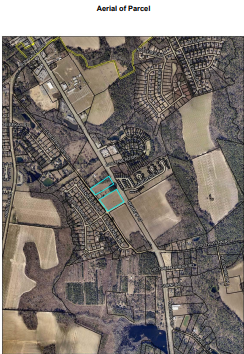
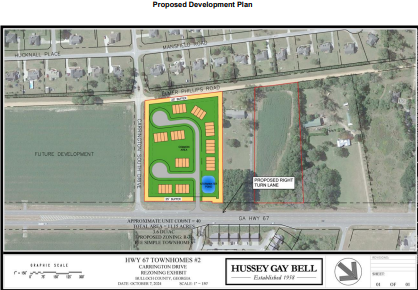
Attorney Rushing presented on behalf of developer Jason Williams for the rezoning of a 7-acre parcel adjacent to Item 2. Rushing explained that Williams acquired both parcels from estates, purchasing this tract from the heirs of the Judge Sanders Martin property. Like the previous item, this parcel’s access was initially proposed through Carrington South Drive, but county ordinances for multi-family projects require access via an arterial road, in this case, Highway 67. Preliminary feedback from GDOT suggests that they may approve this access, though a final determination will come after the rezoning process is complete.
Rushing highlighted that, similar to the neighboring parcel, this property has minimal environmental restrictions, such as wetlands or floodplains, and will be connected to city water and sewer. The county staff’s report indicated that the property is suitable for the proposed R-3 zoning, with conditions applied to address community concerns. Rushing noted that these conditions are acceptable to Williams, who envisions a balanced development with green spaces in line with the surrounding R-3 zoning.
Rushing concluded by requesting approval for the rezoning, emphasizing that the project meets county requirements and aligns with the future land use plan for the area.
Andy Bunch spoke in opposition to the second rezoning request, building on his previous concerns about the potential impact on the neighborhood. He addressed earlier comments by Paul Newman, arguing that while there may be a demand for rentals, rental properties in Carrington South have created challenges for homeowners. Citing a recent incident involving a tenant’s dog that allegedly attacked a neighbor, Bunch criticized PMG Rentals for poor property management, stating that issues with renters often go unresolved.
Bunch expressed concerns about the noise, traffic, and disruptions associated with high-density rental developments, particularly given Carrington South’s established single-family, owner-occupied community. He asked the commissioners to deny this rezoning request, even if they approve the first one, suggesting that a reduction in density or consideration of single-family homes (R-25) would better suit the area’s character and preserve the quality of life for residents.
Attorney Rushing responded to Andy Bunch’s concerns by emphasizing that developer Jason Williams plans to retain ownership of all the units in the proposed development, providing a single point of contact for any issues that may arise. Rushing noted that Williams has already met with Bunch and expressed willingness to continue discussions to address neighborhood concerns.
Rushing assured the commissioners and residents that Williams intends to maintain high standards for the development, emphasizing his commitment to creating quality units that will reflect his own investment and retirement plans. Rushing concluded by reiterating Williams' dedication to working collaboratively with Carrington South’s HOA and its leadership to ensure a positive and respectful neighborhood environment.
DENIED 4. Kyle Hadden has submitted an application to rezone approximately 10.55 acres from R-80 (Residential 80,000 sq. ft.) to R-3 (Multiple Family Residential 15,000 sq. ft.) for the purpose of creating a multi-family housing development. The property is located at 424 Brannen Drive.
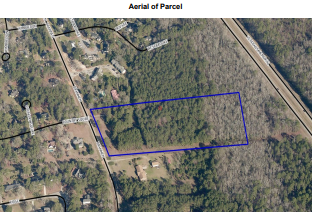
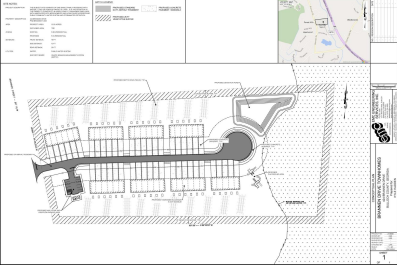
Cody Rogers from EMC Engineering presented the concept plan for a proposed townhome development on a 10.55-acre parcel. The plan includes 47 townhome units across eight buildings, yielding a density of 4.45 units per acre, which falls within the requirements for R-3 zoning. Rogers explained that the R-3 designation is necessary to permit townhome construction specifically, not to exceed density limits.
Rogers noted that Brannen Drive will be the sole access point for the development, and the team plans to seek a variance for this access. The development will feature a community water system supplied by a well, along with individual septic systems. A wetland area at the back of the property will provide a natural buffer, aligning with the area’s designation in the county’s comprehensive plan.
Stacy Webb spoke on behalf of neighborhood residents opposing the rezoning for a proposed 47-townhome development. Webb referenced a petition signed by 85 residents expressing concerns about increased density and its impacts on the community. She highlighted several issues from the county’s departmental review, including a projected $35,000 shortfall for public services and an acknowledged shortage of law enforcement, fire, and EMT resources to cover both the new development and existing neighborhoods.
Webb emphasized the environmental concerns tied to the development’s proposed use of 47 individual septic tanks, noting that these could add up to 9,000 gallons of wastewater per day into the groundwater. She argued that this influx could increase flooding in the area, particularly in the basin around Cypress Lake Road and Veterans Memorial Highway, which already experiences near-flooding during heavy rains.
Webb also stressed the potential impact on neighborhood character and property values, citing concerns that the transient nature of rental townhomes would shift the established, close-knit dynamic of the community. Referencing a recent 3-5% drop in property values, she suggested that the proposal has already had a negative influence on the area. Webb closed by asking the commissioners to deny the rezoning request, aligning with both the Planning and Zoning Board’s unanimous recommendation to deny and the department’s report highlighting five negative impacts with no positive benefits.
Shelly Rountree voiced her opposition to the proposed 47-townhome development, citing numerous concerns about its impact on the community’s character, environmental sustainability, and infrastructure. Rountree referenced the county’s departmental review, noting the substantial increase in density from 0.545 units per acre to 4.45 units per acre—a 716% increase that would leap over six zoning levels, from R-80 (single-family homes on large lots) to high-density R-3 zoning.
She emphasized that this drastic zoning change would permanently alter the area, which is currently surrounded by long-established single-family neighborhoods. These neighborhoods were developed with larger lots, and residents bought properties under the understanding that zoning would maintain this low-density character. Rountree argued that the proposed high-density zoning is incompatible with the existing homes and would devalue property in the area.
Rountree also highlighted environmental concerns, pointing to federally recognized wetlands behind the proposed site. She explained that the paved surfaces and additional septic tanks could lead to increased stormwater runoff and groundwater saturation, potentially causing further flooding on nearby Cypress Lake Road. She noted that existing infrastructure on Brannen Drive lacks the capacity to support high-density traffic and is not designed for pedestrian access.
Rountree concluded by urging the commissioners to consider the long-term impacts of approving this rezoning, stating that responsible development should balance economic growth with the preservation of community character and property values. She asked the board to maintain the integrity of zoning regulations and uphold the standards expected by established property owners.
Rogers responded to concerns about environmental impacts, particularly stormwater runoff and septic system use. Rogers illustrated the site plan, highlighting the ample green space, including preserved wooded areas, federally protected wetlands, and a proposed detention pond. The detention pond, Rogers explained, is designed to manage stormwater runoff, keeping it at or below pre-development levels. As part of the permitting process, the team will conduct a downstream analysis to ensure sustainable runoff control in compliance with county engineering and planning requirements.
Addressing concerns about septic systems, Rogers noted that city sewer services are unavailable in this area, so individual septic systems are proposed—consistent with other properties in the vicinity. He clarified that septic systems do not contribute to surface runoff, as they are designed to filter water through the soil, preventing contamination of groundwater sources, including aquifers.
Rogers also commented on property values, expressing confidence that adjacent developments typically increase values, rather than diminish them. He mentioned similar nearby developments, such as Westbrook Subdivision, which feature comparable residential products and have been well-received in the area.
In conclusion, Rogers emphasized that the design includes extensive green space and wetland preservation, noting that the recent heavy rainfall showcased the wetlands’ role in managing stormwater effectively. He addressed the financial feasibility, explaining that single-family zoning was considered but would not be economically viable for this project.
The application was denied by the commissioners.
DENIED 5. Eagle Creek Construction Inc., has submitted an application to rezone approximately for 42.5 acres from AG-5 (Agricultural 5 acres) to R-40 (Residential 40,000 sq. ft.) for the development of a single-family residential neighborhood. The property is located at 6417 Arcola Road.
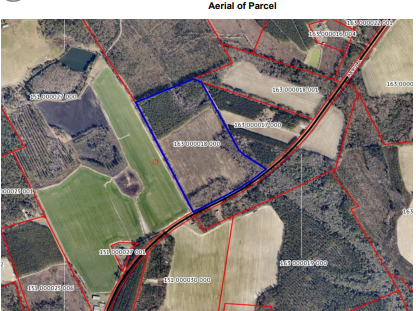
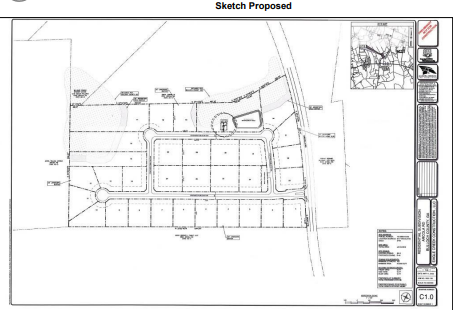
John Dotson, representing the developer, presented the proposal for a 48-acre single-family home subdivision. The property is located approximately 1.7 miles from Highway 80 and about 0.5 miles from Mud Road, close to but not within the designated character area. Dotson explained that the development plan includes a private water system, an amenities package, and a stormwater detention pond to manage runoff, minimizing any negative impact from stormwater.
Dotson shared that the subdivision would feature 31 lots, each zoned R-40 or larger, aligning with the surrounding low-density rural area. He referenced a similar R-40 subdivision approved recently on Denmark Road, which also lies outside the character area.
Jennifer Carstans presented her objections to the proposed 48-acre single-family development, citing concerns about maintaining the rural character of the area and the impact on local infrastructure. She referenced the county’s Comprehensive Plan, which includes a goal of preserving rural lifestyles and agricultural land. Carstans noted that most surrounding properties are five-acre lots, and the proposed higher-density development would be out of alignment with the existing community character.
Carstans expressed concerns over the strain this development would place on infrastructure, particularly the county-maintained two-lane road, which is already experiencing increased traffic. She highlighted that the development would add approximately 40% more traffic, requiring additional public services such as transportation and trash pickup. She also noted that current fire, EMS, and law enforcement response times fall short of national standards for the area.
Carstans referenced the Planning and Zoning review, which listed several negative and neutral impacts, with only one positive, a modest fiscal benefit of $18,848 over seven years. She urged the commissioners to follow the Planning and Zoning Board’s recommendation to deny the rezoning request.
Horace Harrel expressed strong opposition to the rezoning request. Harrel shared that he moved from Statesboro to enjoy the rural lifestyle offered by the Ag-5 zoning and large farm parcels typical of the area. He argued that this development would disrupt the character of the community and strain an already inadequate infrastructure. Harrel pointed out that nearby roads are poorly maintained, with deep ruts forming after rainfall, and added that emergency response times are slow, particularly in remote areas like this.
Harrel noted that the development’s location is isolated, approximately 10 miles from essential services, and would rely on a private water system with individual septic tanks, despite the county’s future plans for city water and sewer. He cautioned against rushing rezoning decisions, citing the rapid development already underway in nearby Bryan, Effingham, and Chatham counties. Harrel argued that Bulloch County does not need to compete in a “race” to build housing, especially given the existing backlog of approved but unfilled developments.
He closed by mentioning the challenges residents might face with nearby agricultural practices, like the use of chicken manure, which could lead to complaints from new residents unfamiliar with farm life. Citing infrastructure limitations, fire and sheriff service gaps, and concerns over water and road conditions, Harrel urged the commissioners to reject the rezoning request.
Dianne Smith spoke in opposition to the proposed rezoning, noting that her property borders the development site to the north. Smith shared concerns about traffic safety, mentioning near-misses when trying to access the highway from her home due to high traffic volumes. She also noted issues with emergency response times, recounting delays when an ambulance was needed at her residence several years ago.
Smith suggested that the proposed five-acre zoning could still provide a profitable outcome for the developers without compromising the rural character of the area. She respectfully asked the commissioners to deny the rezoning request, urging them to consider the community’s concerns.
Ginger Barnard expressed her opposition to the proposed rezoning. Barnard explained that the development site is diagonally across from her property and that traffic on both Arcola and Mud Roads has steadily increased, with the development likely to worsen the situation. She highlighted concerns about speeding and the frequent disregard for stop signs at the intersection of Arcola and Mud Roads.
Barnard also noted that the proposed development’s entrance is located on a sharp curve with limited visibility, which she believes could further endanger drivers in the area. She concluded by urging the commissioners to consider the current infrastructure limitations, which she argued are insufficient to support such a large development.
Dennis Akins expressed concerns primarily about the financial burden the proposed development might impose on the county.
The commission denied the rezoning request.
DENIED 6. Elizabeth B. Veal, as agent for Blitch Place Land Co, LLC. has applied to rezone 57.7 acres from AG-5 (Agriculture 5 Acres) to R-25 (Residential 25,000) for the purpose of developing a subdivision. The property is located on Old Riggs Mill Road.
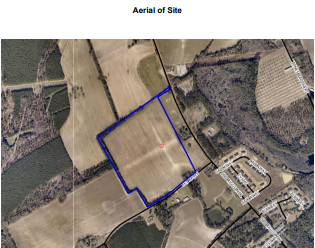
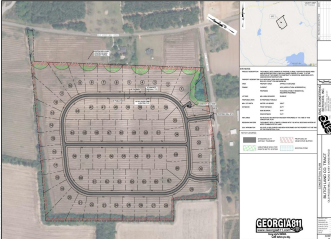
Cody Rogers presented the proposal for a 69-home subdivision on 57.7 acres, which is zoned R-25, yielding a density of just over one unit per acre. Rogers highlighted that the density aligns closely with R-40 zoning standards, maintaining a lower-density character. The development will include two access points on Key Akins Road, which he noted is a lightly traveled road with few existing residents. Rogers emphasized that nearby properties already have higher-intensity zoning, making this development consistent with the area’s character.
Susan Stainback, managing landowner at Branch Creek Farm, spoke on behalf of herself and neighboring landowner Jane Cason, opposing the rezoning request. Branch Creek Farm, located along Pulaski Road and adjacent to the proposed development, is used for agricultural row crops, timber production, and wildlife conservation. Stainback emphasized that this part of the county, identified as rural and natural open space in the Comprehensive Plan, is rich with agricultural heritage and sensitive environmental areas, including wetlands and Cypress Lake’s headwaters.
Stainback highlighted concerns about increased stormwater runoff, which would exacerbate existing flooding issues and potentially overwhelm the area’s natural flood management. She noted that Branch Creek Farm and nearby lands help absorb floodwaters before they flow downstream. Additional concerns included potential wildlife habitat disruption, increased insurance rates, and environmental impacts caused by denser development.
Both Stainback and Cason urged the commissioners to preserve the area’s AG-5 zoning and uphold the Planning and Zoning Board’s unanimous recommendation to deny the rezoning request. They requested that the commissioners respect the community’s investment in agricultural and conservation efforts and the area’s character as outlined in the county’s comprehensive plan.
Rogers addressed concerns raised about the potential impact of the proposed development on adjacent properties and sensitive wildlife areas. He emphasized that the developer does not intend to affect neighboring lands, as the project will only modify the parcel being rezoned. Rogers expressed support for wildlife conservation efforts on nearby properties and reassured that the development would respect and not interfere with those sensitive areas.
He acknowledged the existing flooding concerns shared by neighboring landowners, referencing images showing standing water in the area. Rogers reiterated that the development will include stormwater management measures, such as detention ponds, to manage runoff effectively, ensuring that additional housing would not worsen existing drainage issues.
Rogers closed by noting that the landowner is seeking to use the property in alignment with its highest potential and emphasized that the planned density of just over one unit per acre remains relatively low, consistent with surrounding zoning and the area.
The commissioners denied the rezoing request.
DENIED 7. Robert K. Bell Jr. Investments, Inc. has applied to rezone 126 acres from AG-5 (Agriculture 5 acres) to R40 (Residential 40,000) for the purpose of creating a subdivision. The property is located on Old River Road North at or near Macedonia Road.

Robbie Bell, a local developer, presented his plans for a 48-acre subdivision with R-40 zoning, proposing 69 single-family homes on the property. Bell explained that, while the land is currently zoned AG-5, he intends to create a well-planned community with significant infrastructure improvements. The proposed layout includes paved internal roads, a community water system meeting fire flow standards, and a design that directs all home access inward, minimizing driveways on surrounding roads.
Bell highlighted that the plan was modified to address neighbor concerns by eliminating previously proposed access points on Windy Hill Road, with access now exclusively on Old River Road—a low-traffic, recently resurfaced road. Bell described the land as high and dry with minimal wetlands, and he confirmed that any septic systems would comply with county health standards, including a Level 3 soil report due to the nearby river.
To maintain neighborhood quality, Bell proposed restrictive covenants and a homeowners association to enforce standards, with the subdivision falling under R-40 guidelines rather than a higher-density zoning. He shared that he’d spoken with several neighbors post-planning meeting, addressing their concerns and offering to establish buffer zones on adjacent properties. Bell closed by emphasizing the lower-density, upscale nature of the project and welcomed questions from the commissioners.
Angie Dyches expressed her concerns about the proposed subdivision, highlighting that the dense development would significantly change the character of the rural community. She noted that her family, along with 13 others, lives along a lightly trafficked, surface-treated road, and adding 69 new homes could overburden local infrastructure, including narrow roads, emergency services, and schools. Dyches explained that the area lacks adequate EMS response times and law enforcement presence, which could be further strained by an influx of new residents.
While acknowledging that the developer, Robbie Bell, has the right to use his land, Dyches emphasized that the rural infrastructure is not prepared to support high-density growth. She urged the commissioners to consider reducing the proposed density to help preserve the community’s rural character and allow time for infrastructure improvements. Dyches concluded by stressing that lower-density growth would be safer and more sustainable, aligning with the community’s needs.
John Hodges shared his mixed feelings about the proposed subdivision by developer Robbie Bell. While he respects the idea that property owners should be able to develop their land, he raised concerns about the impact that high-density development could have on neighboring properties and the community. Hodges outlined three possible outcomes: approving the request at the proposed density, denying it, or reducing the density. He noted that a denial could lead to a workaround through family subdivisions, potentially yielding the same density in a less controlled manner.
Hodges expressed his preference for a solution that either delays the project until infrastructure catches up or reduces the density, which he believes would resolve most opposition, including his own. He highlighted the potential traffic increase on local roads and concerns over environmental impacts on the nearby Ogeechee River, which has had issues in the past. Referring to the county’s vision plan and Planning and Zoning Board’s recommendation against the rezoning, Hodges respectfully requested that the commissioners deny the current request.
Lesia English voiced her concerns about the proposed subdivision, particularly regarding its environmental impact and compatibility with the rural character of the community. English explained that she is the closest neighboring property to the proposed development but was not contacted by the developer, Robbie Bell, to discuss the project. She expressed disappointment at not being consulted, feeling excluded from conversations about a project that would directly impact her property.
English highlighted concerns about increased traffic, the potential strain on sewage systems, and the health of the nearby river, which she described as already struggling. As a longtime resident and 35-year school teacher, she emphasized her dedication to the community and noted that Bell’s development plan did not align with the area’s character. Echoing other residents’ calls, she urged the commissioners to consider a lower-density development or deny the rezoning altogether.
Karen McClain expressed strong opposition to the proposed subdivision, referring to it as a "monster" development that would disrupt the rural character of her family’s land and the surrounding community. McClain explained that she and her sisters inherited their property on Macedonia Road, which has been in her family for generations, emphasizing a deep-rooted connection to the area. She shared that her son and his family, along with several cousins and friends, live nearby, and they value the quiet, rural lifestyle.
McClain raised concerns about increased traffic, crime, and safety risks, noting that most vehicles from the new development would likely use Macedonia Road to travel to Statesboro. She expressed a desire to keep the area rural, with larger tracts of land that allow for traditional farming activities rather than high-density housing. McClain urged the commissioners to deny the rezoning request, warning that approving it could set a precedent for similar developments that would change the rural landscape of the community.
Robbie Bell responded to community concerns, apologizing for not reaching out to all neighboring landowners, particularly Lesia English, and explaining that he refrained from visiting properties directly out of respect for residents’ privacy. Bell acknowledged that some neighbors, like Karen McClain, may not be satisfied with any development. He noted that while residents express a desire to maintain the rural nature of the area, there is a substantial need for more single-family housing in Bulloch County.
Bell highlighted the shortage of traditional detached homes for sale, explaining that most new housing developments around Statesboro are higher-density rental units. He provided data on the limited housing inventory, with only 87 traditional homes currently available in the county and a shortfall of around 1,000 homes to meet existing demand. Bell emphasized that the proposed subdivision aims to address this housing need, particularly for people who want to live outside of Statesboro’s city limits.
The commissioners denied the rezoning request.
DIFFERED 8. Blue Water Bulloch, LLC. has applied to rezone 38.5 acres from AG-5 (Agriculture 5 acres) to R-3 Multiple Family Residential (minimum lot size – 15,000 square feet). to develop a townhome subdivision. This property is located at 285 Herman Rushing Road.
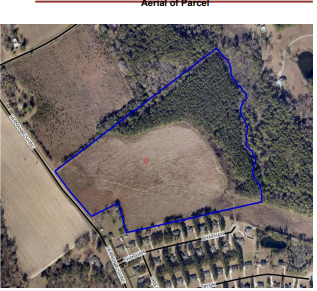

Steve Rushing, representing Blue Water Bulloch, requested a deferral for the rezoning application due to unresolved issues with the anticipated city water and sewer connections. He explained that during the previous night’s meeting, concerns were raised by county representatives about water and sewer service from the City of Statesboro. Efforts to obtain clarification from city officials were unsuccessful, as key contacts were unavailable. Rushing expressed regret for the late request and for any inconvenience to residents in attendance, noting that a single deferral would allow additional time to resolve these infrastructure questions.
Joel Martinexpressed opposition to the proposed development, emphasizing concerns over potential annexation. He explained that he moved to the county to avoid living within city limits and does not want city boundaries extending to his backyard. Citing past city annexations in nearby areas, he shared his frustration with the city’s approach to planning, noting that issues like traffic and school impacts were often passed off as “someone else’s problem.”
Martin also highlighted the significant traffic increase expected from this development, noting that if approved, it would contribute to nearly 1,000 residential units within a half-mile radius of the area. He urged the commissioners to consider the long-term impact on local infrastructure before approving further developments, emphasizing a need for careful planning to maintain the rural character of the community.
The commissioners voted to defer this request until the December 3rd meeting.
IX. PUBLIC COMMENTS
David Reed, a resident of Bulloch County, raised concerns about increasing stormwater runoff and its impact on local waterways and properties. He shared that each year, heavy rains and storms cause higher water levels, which he attributes to the extensive new development in both the city and county. Reed emphasized that rapid growth, along with the addition of asphalt and concrete, has overwhelmed natural drainage systems and worsened flooding issues.
Reed urged city and county officials to collaborate on a solution, suggesting that new developments, both commercial and residential, should be required to include larger retention ponds capable of handling significant rainfall. Reflecting on his decades in the area, he noted that his property’s pond, which had never overflowed before, has now flooded twice this year. He called on the commissioners to prioritize stormwater management to protect long-standing residents and mitigate future flooding risks.
Lisha Nevil reminded the commissioners of her earlier warnings about relying too much on Hyundai’s EV plant, citing recent political changes that could impact the industry. She urged caution in approving more housing developments, noting that recent projections show Bulloch County’s growth may be slower than expected. With current projects already set to meet future housing demand, Nevil questioned the need for more approvals, especially considering the strain on local schools and infrastructure. She called for honest, careful planning that prioritizes existing residents over developers’ interests.
X. COMMISSION AND STAFF COMMENTS
Public Works Director Dink Butler and Fire Chief Ben Tapley provided commissioners with an update on the severe impacts of recent storms, the ongoing flood response, and the county’s progress toward meeting FEMA’s 90-day reimbursement deadline for storm debris cleanup. Butler shared that heavy rain had caused extensive flooding, leading to about 40 road closures throughout the county and over 65 reports of roads covered in water. In response, Public Works has been actively managing road closures and flood impacts, while multiple agencies, including the fire department and sheriff's office, coordinated rescues. Chief Tapley detailed several rescues, including a case where a battalion chief used a high-water vehicle to access a flooded home and another instance where a sheriff’s boat was deployed to reach an isolated residence. Tapley praised the teamwork between Bullock County’s emergency services and noted that some families displaced by the flooding were relocated to motels overnight.
As flooding continued, Butler urged residents to stay off the roads unless necessary, particularly dirt roads that had yet to be evaluated for safety. He added that his team had coordinated with the Board of Education to advise school buses to avoid dirt roads until thorough assessments could be made.
Butler also addressed delays in storm debris cleanup, reporting that efforts had slowed significantly due to subcontractors being diverted to Florida, where they were offered higher reimbursement rates. This reduction in resources left the county with only five trucks instead of the originally contracted 15, stalling progress at around 15% of total debris removal. Butler indicated that the county is unlikely to meet FEMA’s 90-day deadline for 100% reimbursement and estimated that failing to meet the deadline would reduce FEMA’s reimbursement rate from 100% to 75%, which could cost the county around $500,000. He noted that several neighboring states received a 180-day extension, and commissioners discussed advocating with state and local representatives for a similar extension for Georgia.
Despite these challenges, Butler shared positive news about recent FEMA approvals of two substantial reimbursements from prior storms, including $580,000 for road grading after last year’s Idalia storm and $4.7 million for drainage improvements. He assured commissioners that his team will resume assessing and repairing affected roads as soon as possible. In response to questions from Lawton Sack, Butler confirmed that the debris contractor initially did not bring enough trucks, and that while additional trucks from Statesboro are expected to assist once city cleanup is complete, it will likely take a few weeks to see more progress.
Butler closed by acknowledging the challenges the county faces but expressed confidence in his team’s commitment to completing the debris cleanup and road repair efforts. He thanked all departments for their coordinated work in response to the flood, emphasizing that public safety remains the county’s top priority.
Xl. Executive Session
No action taken.
XIl. ADJOURN

